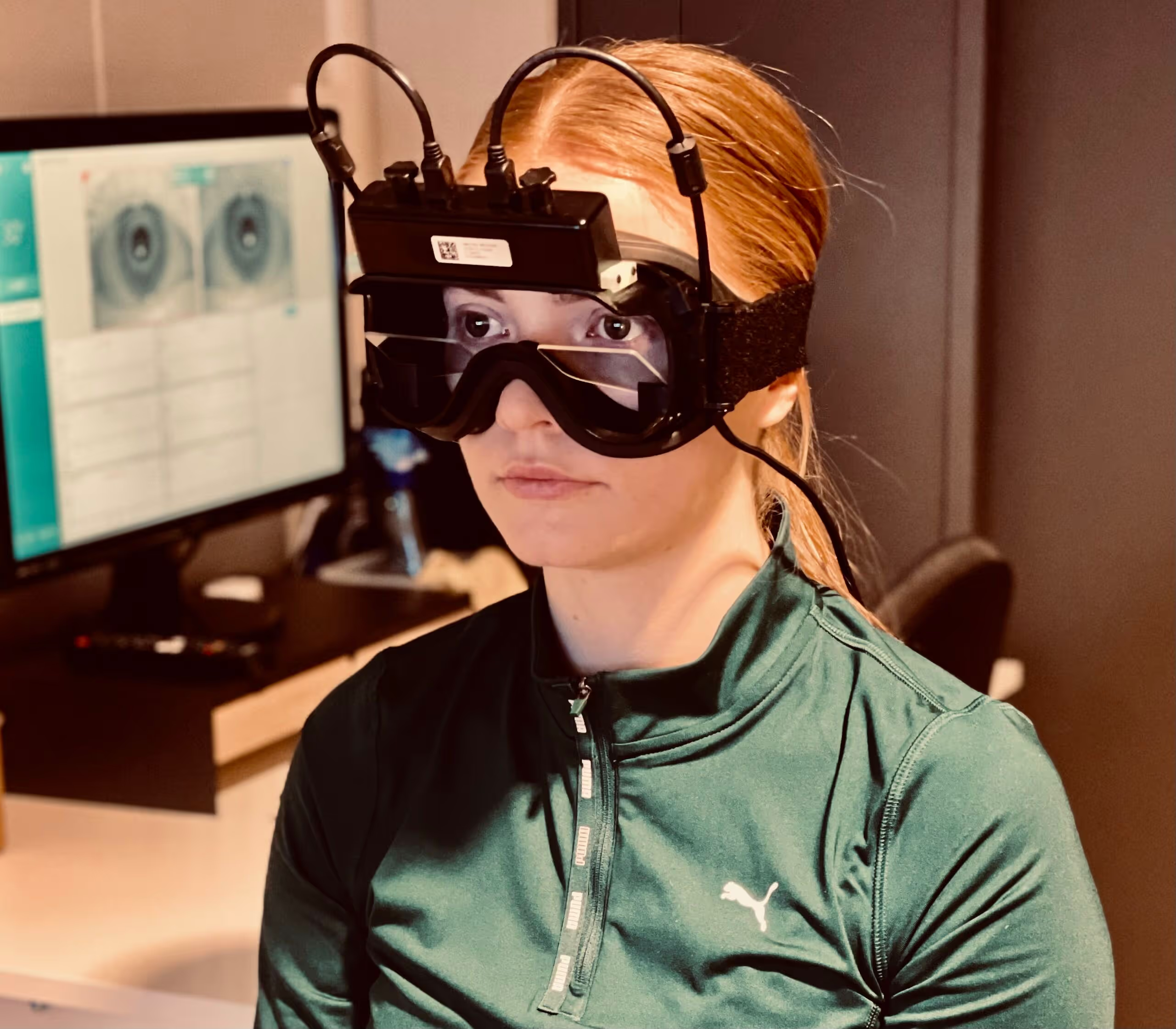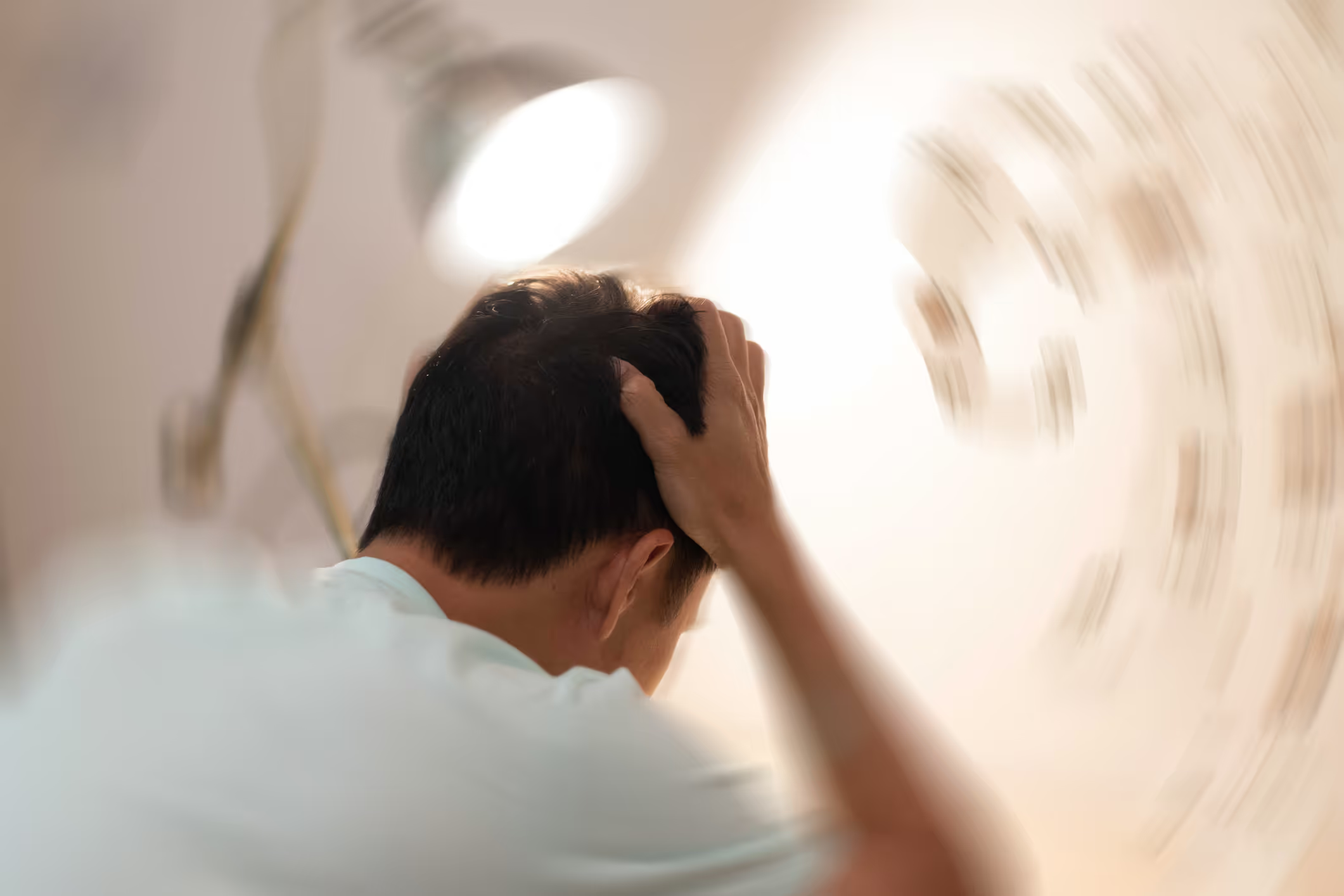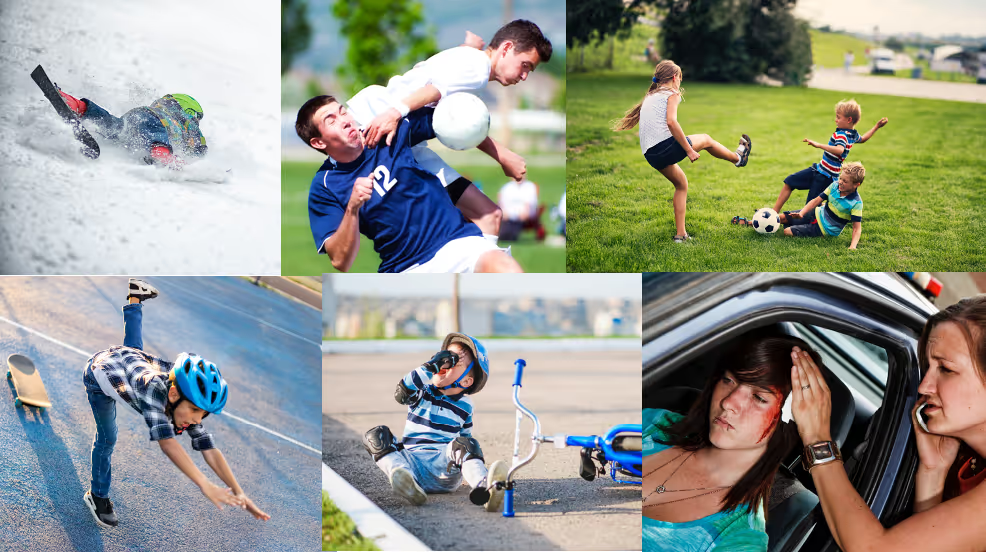Concussion

Concussion affects over 30 000 Norwegians every year and occurs when physical trauma causes a shock to the brain. Either by direct blows, shocks to the head or neck, or by other forms of indirect physical trauma such as landing heavily on the legs which causes the brain to receive a strong shock. Common forms of direct trauma to the head or neck are falls, bicycle accidents, car accidents, direct blows to the head during sports activities or violence.
What is a concussion?
In a concussion, the brain suffers an immediate functional disruption, which makes it more challenging for the brain to, among other things, process and coordinate different sensory inputs, and makes it more challenging for different parts of the brain to communicate with each other. These dysfunctions are not life-threatening, but are the cause of the various symptoms. Fortunately, in over 50% of cases, the symptoms are transient, lasting 1-3 months. However, over 40% of concussion cases suffer chronic complaints that reduce quality of life and work participation for more than 5 years after the accident. This is a significantly higher proportion than the general public and the average clinician realize, and establishes that the consequences of a concussion are a greater problem than previously thought.


Symptoms of concussion
Previously, a concussion was defined as a head trauma that caused a brief loss of consciousness (up to 10-15 minutes), loss of memory of the moment of injury and one or more of the following symptoms:
- Headache
- Dizziness
- Nausea
- Shyness
- Ear infection
- Fatigue
- Confusion
- Impaired attention
This definition is outdated and was amended in 2012 to require no loss of consciousness for the injury to be classified as a concussion, and was further amended in 2016. It is now considered that a physical trauma that causes direct or indirect impact to the brain and that causes the development of neurological symptoms immediately after the injury, or minutes or hours after, can be defined as a concussion. The list of symptoms of a concussion has also been updated to include a broader range of functional impairment than previously. Including physical symptoms, cognitive disturbances, and behavioral changes.
Among other things:
- Headache
- Dizziness
- Brain fog
- Nausea
- High sensitivity to sensory input
- Stiffness and pain in the back and neck
- Impaired balance and coordination
- Ear infection
- Fatigue
- Irritability and mood swings
- Confusion
- Impaired attention and responsiveness
- Impaired concentration
- Memory impairment
- Sleep disorder
- Reduced threshold to sensory input and activity before symptoms worsen
Treatment for acute concussion
The immediate treatment for people with a concussion is rest and monitoring for the first 24-48 hours. The first night it is important that the person is woken up once every 2-3 hours and asked questions such as name, date of birth and where they live to test consciousness. It is also important to avoid moderate-hard physical activity, reading, watching TV/PC/tablet etc. and one must stay away from mental work that exacerbates symptoms for the first 2-7 days. All these activities can exhaust the brain and you risk prolonging the course of symptoms if you return to "normal" activity prematurely and do not pay attention to the symptoms. It is also important to avoid painkillers for the first 48 hours even if you have a lot of discomfort or pain. This is important because painkillers can mask worsening symptoms caused by swelling in the brain and can affect the blood's ability to clot. If any of the symptoms are unbearable or any of the symptoms worsen, you should contact the emergency services.
Chronic concussion syndrome, post-concussion syndrome.
If symptoms and pain persist for more than 3 months, it is classified as chronic concussion syndrome, post-concussion syndrome. At least 40% of people who sustain a concussion are plagued with reduced quality of life and reduced work participation for more than 5 years. And as many as 70% of this group suffer persistent symptoms.
If you suffer from one or more of the following symptoms for more than 3 months, you are likely to have chronic concussion syndrome:
- Headache
- Dizziness
- Chronic tiredness or fatigue. Fatigue is constant exhaustion, both physical and mental tiredness, that does not improve with rest or plenty of sleep. Fatigue is a common symptom of neurological injury and disease.
- Increased irritability
- Difficulty sleeping
- Reduced tolerance to stress
- Reduced tolerance to activity
- High sensitivity to sensory input
- Impaired concentration or other cognitive abilities such as memory and learning
- Impaired ability to gather and process sensory information. Or other impaired executive functions that are important for performing actions effectively and efficiently. Executive functions including gathering and processing sensory input so that one can, among other things, assess situations, make plans, initiate the plans and make appropriate changes to complete the action successfully.
Treatment of chronic concussion syndrome, post-concussion syndrome.
Research shows that multisensory or multimodal rehabilitation therapy is among the most effective approaches to reduce symptoms and maximize quality of life in people with chronic concussion syndrome, post-concussion syndrome. A rehabilitation program may include sensory motor training, vestibular rehabilitation therapy, training of fine motor control over purposeful eye movements and concentration training, among others.
BrainCamp and Kim Tore Johansen have long and broad experience in examining and tailoring neurological rehabilitation that can improve symptoms resulting from chronic concussion syndrome and other acquired brain injuries. Including neurological disease such as Parkinson's disease and stroke. We use computer-based tests that measure fine motor control over purposeful eye movements and computer-based balance measurement, among others.


